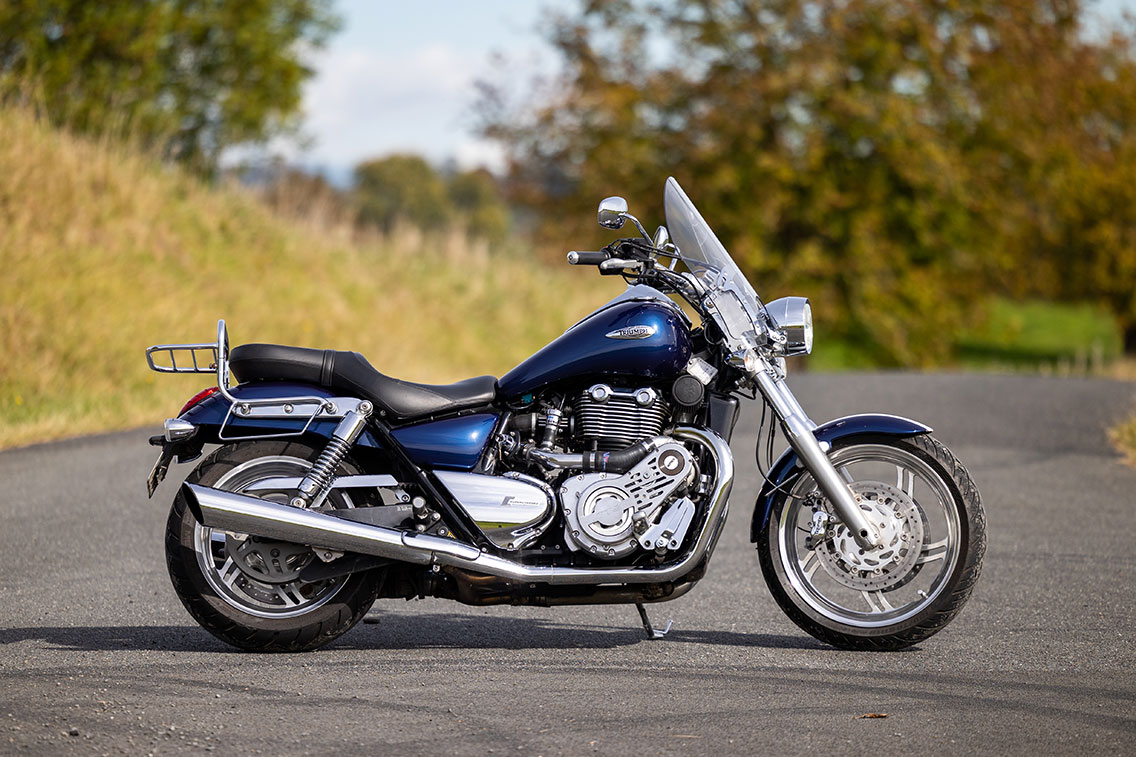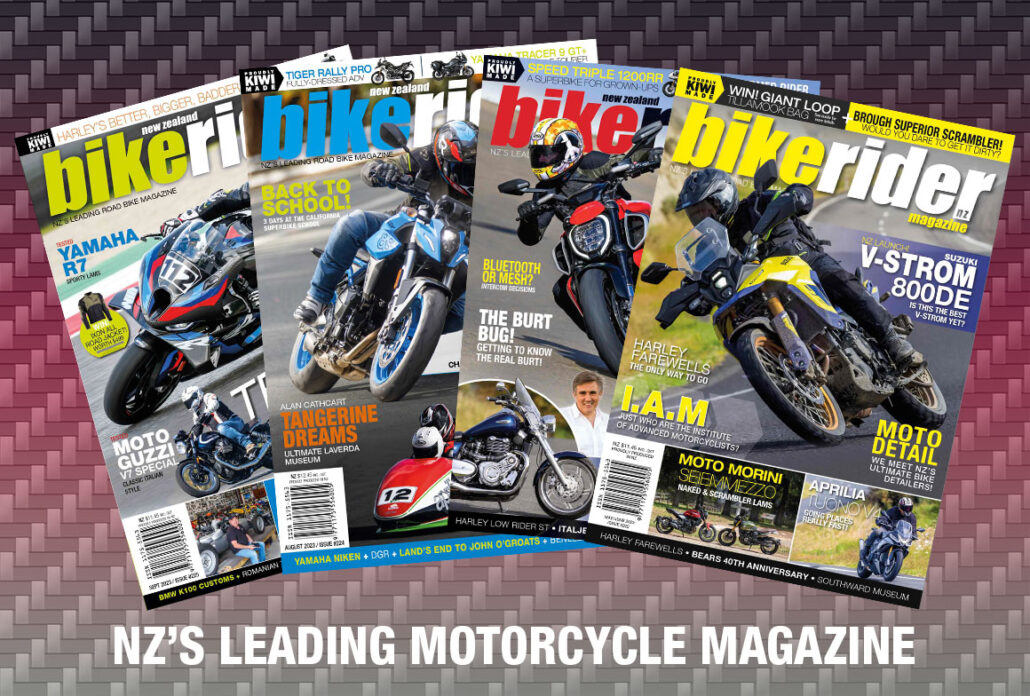We first met John when we were blown away by his TTS supercharged Triumph Thruxton. So we were pretty excited when we got the call to check out his latest project, a super cruiser.
Triumph’s Thunderbird was the English marque’s first serious attempt to compete with the behemoth that is Harley-Davidson. With the recipe made up of a huge capacity twin-cylinder powerplant (parallel, not vee) mated to a belt drive and cruiser riding position, it was arguably a better product than what was on offer from the USA. And it should have worked, but instead, it took the monstrous Rocket III to really take the fight to the Motor Company.
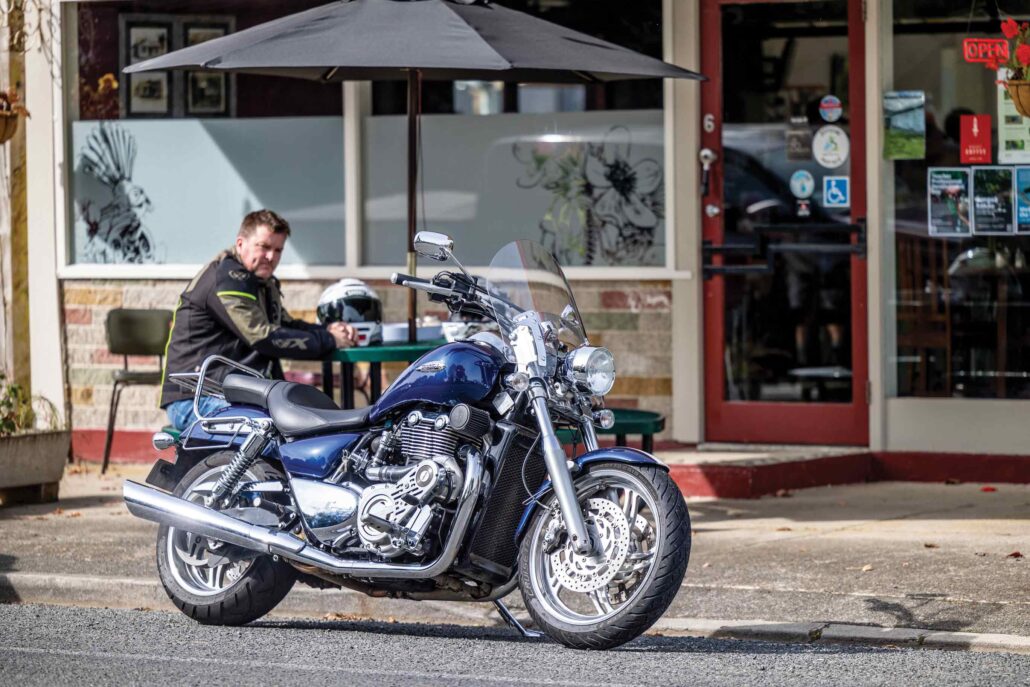
Gentle Giant
The bike John used as his testbed for the TTS supercharger kit he imports from the UK manufacturer was a 2010 Thunderbird featuring the larger 1700cc powerplant. And it’s a hulk of a bike, with a 200-section rear tyre, wide saddle, plenty of chrome and a 340-kilo wet weight – exactly what you’d expect from a machine attempting to make an impact in this segment.
Despite the two slabs of metal moving up and down within the twin cylinders, the performance of the Thunderbird didn’t exactly bring the lightning to match the thunder, with a maximum output of 97hp produced at 5,200rpm. As you’d expect from a large-capacity twin, it was the torque that was the talk, with 156Nm at a lowly 2,950rpm giving the big Brit a decent launch away from the lights while also making it a reasonable tool for open-road cruising. But what made the Triumph stand out from its American competition was the rest of the package, with a decent set of brakes in the form of Triumph-badged Nissin 4-piston calipers gripping twin 310mm discs. And the rear wasn’t forgotten either, with a Brembo 2-piston caliper grabbing onto a 310mm disc.
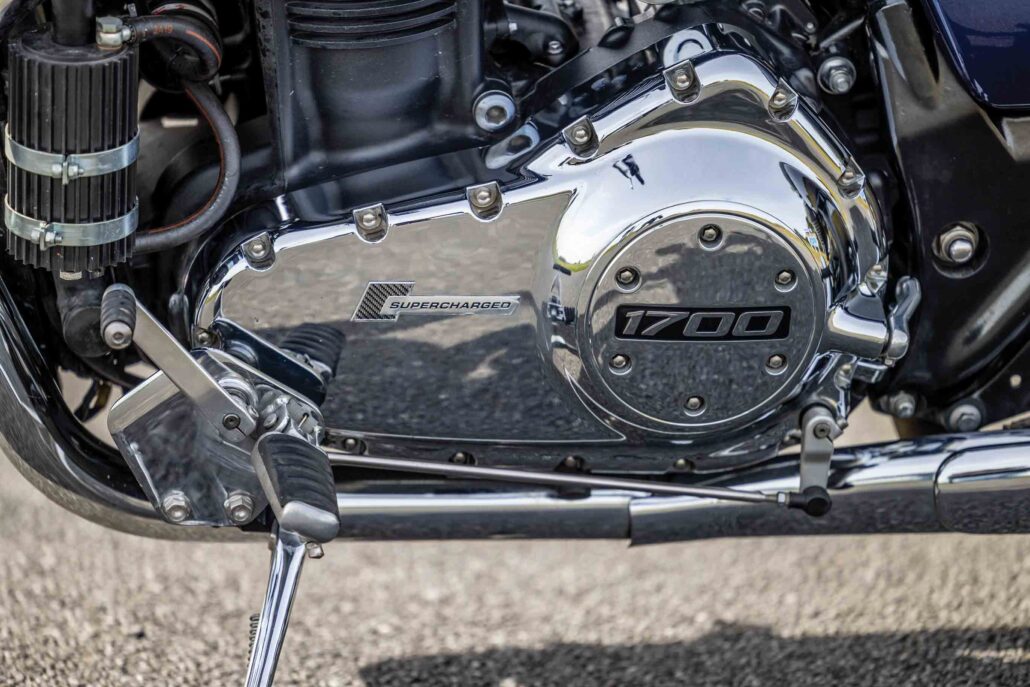
And then there’s the handling. Instead of making the Thunderbird all show and no go, Triumph used their knowledge from making some very sporty machines and gave the T-bird a decent set of spingers in the form of 47mm Showa forks and twin rear shocks. And there was rubber to match the machine, with a hefty 200-section rear tyre offering plenty of grip, while the semi-high pegs and wide handlebars gave the Triumph more handling prowess than the Harleys of the time.
It was good, but not great. And as John explained when I met him at his home in rural Matamata it made for the perfect choice for fitting a supercharger.
“Before the Thruxton and Bonneville became popular with supercharging, TTS did quite a few kits for the Thunderbird,” explained John. “And with the bikes not being too popular, you can pick up decent second-hand models for a reasonable price, meaning it wasn’t too much to then add the supercharger to it without it becoming too expensive.”
John knows a thing or two about superchargers. He’s the NZ agent for TTS, who are pretty much the masters when it comes to supercharging motorcycles. Founded by Richard Albans in 1982, TTS has a history of creating some incredible machines, with recent models including a 300hp Triumph Rocket 3 that looks full-factory and a 370hp
‘SupeBusa’.
John is the NZ agent for TTS, and since we did the review on his Thruxton project bike (which was incredible), he’s been busy selling and fitting superchargers to all manner of machines, even sending some over to Australia. “They tend to have a bit more money to throw around than the Kiwis, especially over by the mines. So I’ve sent a few kits over there,” commented John.
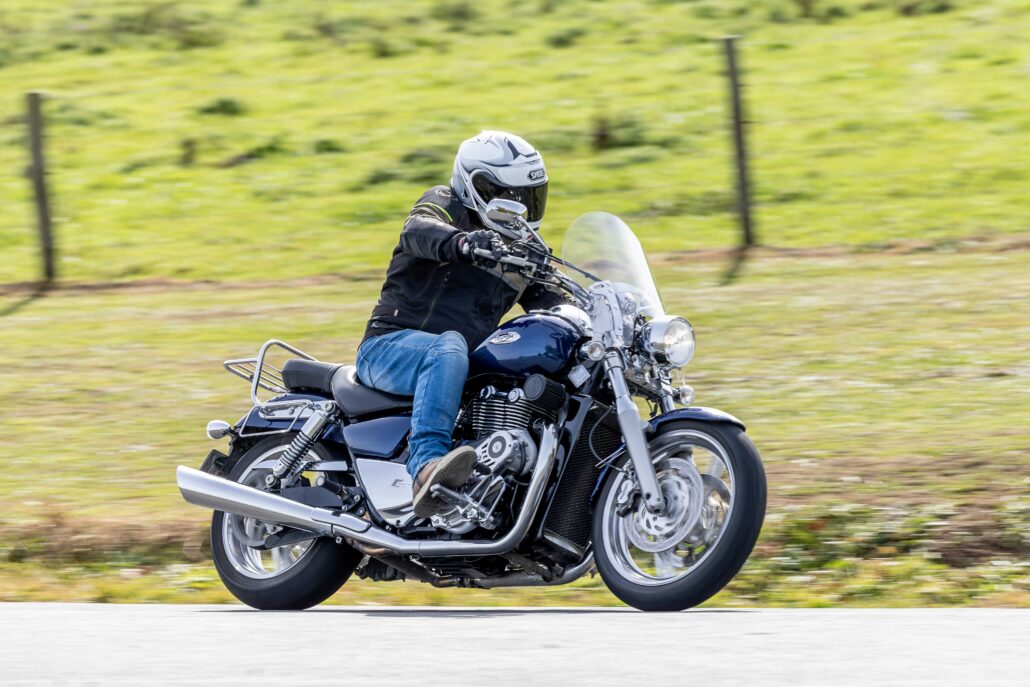
“Bolting the TTS supercharger on the side has taken this mild-mannered British cruiser and turned it into a performance dragster.”
Thunder Downunder
Firing the T-Bird into life and the big twin hesitated a bit before eventually catching and settling down into a regular rhythm. John had mentioned the cold fuelling was still a little hit and miss, with the large injectors meaning dyno-man extraordinaire Bret Roberts couldn’t get it quite sorted without a decent amount of time fettling. But with the motor warming and the supercharger’s mechanical whine by my right foot making me keen to get out on some quiet roads, I snickered the big girl into gear and pulled away.
With John located on the Karapiro side of Matamata, the familiar roads of my local testing ground weren’t too far away. So with Kerry holding on slightly harder than she would usually, we worked our way somewhere quieter before sampling the delight of the TTS blower. Well, we would have if we didn’t spend 10 minutes sitting behind a police car which refused to pass a camper doing 80km/h in a hundred zone. But with the open mufflers offering a decent burble interspersed with some good coughs and bangs on a closed throttle, I wasn’t game enough to slide past the officer just in case he wanted to pull me over for a looksie.
Eventually the camper and the copper turned left, so we instinctively turned right and braced ourselves for the violence that was about to be unleashed. Unlike a turbo which needs the exhaust gases to spool a turbine which, in turn, compresses the air/fuel mixture into the combustion chamber, a supercharger’s power is ready to go when you reach the desired revs. For the Thunderbird, the boost gauge mounted above the handlebars awoke as the revs hit about 4 grand, with a surge of torque and an awakening of the exhausts followed by the fat English sparrow turning into a Peregrine Falcon.
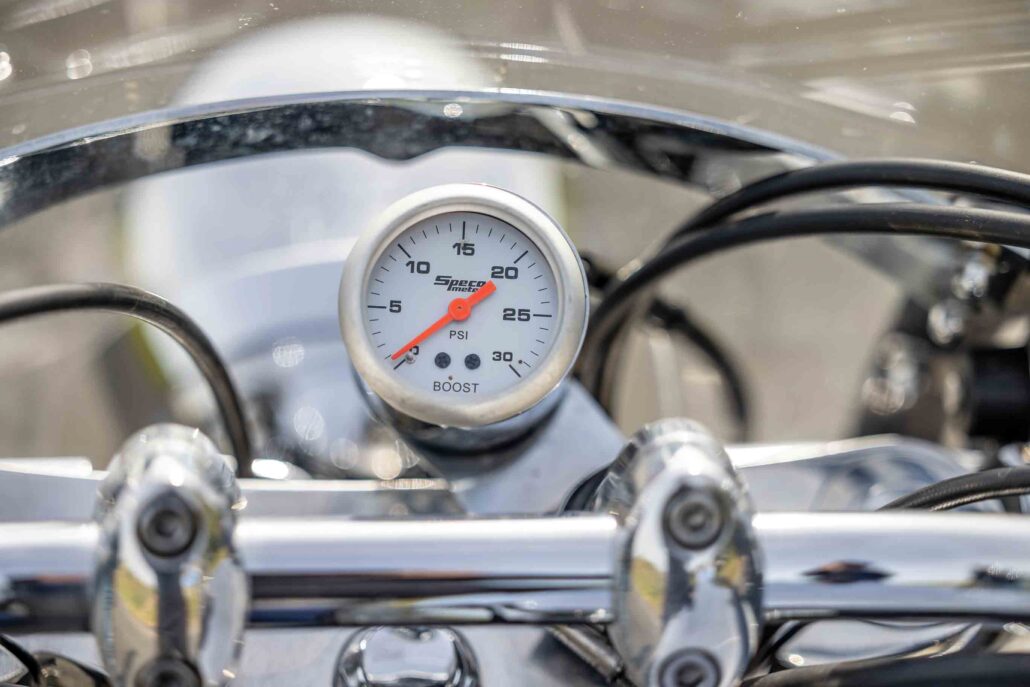
With a few whacks to the kidneys causing me to roll off the throttle (and it wasn’t from the suspension), I knew it would be better to wait till Kerry was at the side of the road taking photos before sampling what the TTS blower has to offer. And when I allowed the supercharger to get into its stride, the performance simply took my breath away. The beauty is that slow speed progress and U-turns can all be performed with the finesse of the standard Thunderbird, and as long as you keep the revs below the magic mark, then you’d barely know the supercharger was fitted. In fact, it doesn’t even add much weight, with the beautifully crafted blower only tipping the scales at around 3 kilos, which is usually the same amount that comes off when John removes the catalytic convertor to open up the breathing.
It’s only when the rev counter reaches the prescribed number (which can be adjusted through gearing and pulley sizes) that the supercharger comes into play, with a surge that is still strong enough to stretch your arms despite the maximum output only recorded at a civilised 140hp. But superchargers aren’t about maximum horsepower. Instead, it’s all about the torque, and the Thunderbird drives forward as if a giant boot is shoving you up the road.
Thankfully, this is where the manners of the Triumph come into play, with the okay handling and sporty-ish brakes giving you a fighting chance of handling the boost and making decent progress on the big Brit. And it is big, with the 340 kilos and rocketship velocity making you start taking notice of what’s approaching with wide eyes. Calculations need to be made well ahead of time, especially with the ease the Thunderbird goes from cruising to full-on maniac mode. It’s an addictive pleasure and something that’s been common on all supercharged motorcycles I’ve ridden.
The other guilty pleasure is the blow-off valve, which gives a flutter of released pressure every time the turbine spools up, and you then roll off the throttle. John fitted an electronic valve, which is an extra 250 bucks on top of the kit, but he reckons it’s well worth it. “It’s just so much more exact,” he explained while pointing to the Red Bull can-sized contraption poking up from the boost pipe. “It monitors throttle position and releases the boosted pressure as soon as it detects you’re rolling off, making it much more precise.”
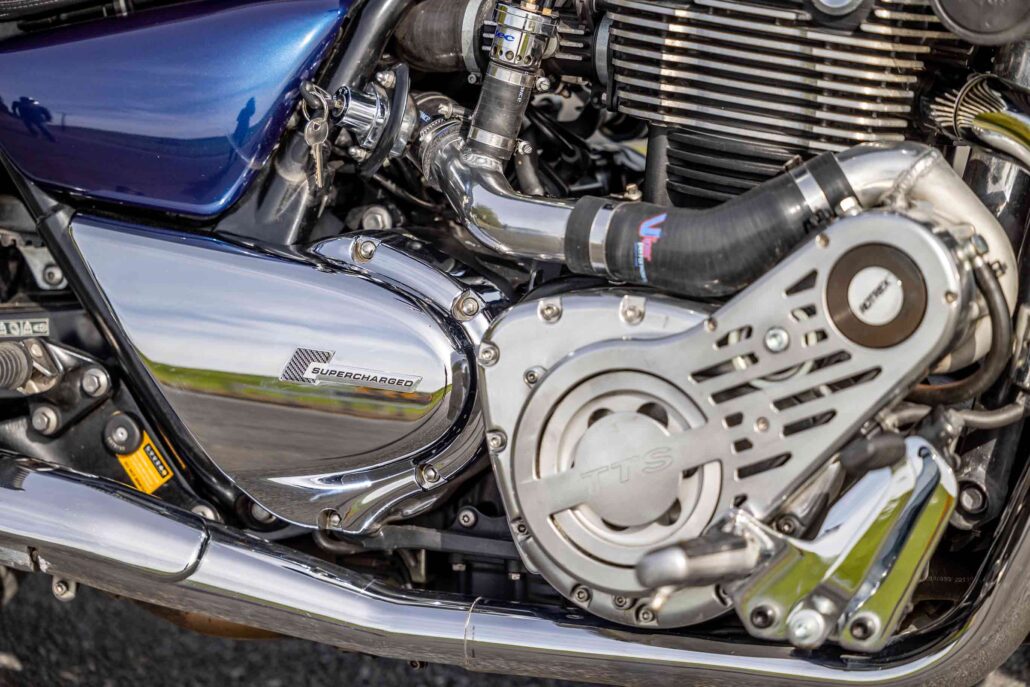
Smiles for Miles
I’ve never ridden a turbo-charged motorcycle, and to be honest, the prospect terrifies me. Much like the first of the variable valve Honda VFRs, which had a habit of giving you an unexpected boost mid-turn, I just feel there’s a certain unpredictability with the delivery from a turbo. But supercharging is different – predictable, usable and soooo much fun.
I wouldn’t call the Triumph Thunderbird a particularly entertaining motorcycle to ride. Yet, bolting the TTS supercharger on the side has taken this mild-mannered British cruiser and turned it into a performance dragster. In fact, John mentioned he’d love to take the big bird to the strip after having so much fun and setting some pretty competitive time on his Thruxton. “Just with the short wheelbase of the Thruxton, it’s hard keeping the front wheel down. I reckon the Thunderbird would be much better,” commented the unassuming Kiwi, who obviously has a bit of speed demon lurking within. John loves supercharging motorcycles, and when he decided he’d like to get into it properly, he teamed up with the best in the business – TTS. The Thunderbird is a great example of how spending a bit of money on an older machine can produce a ride that’s unique, entertaining and a little bit bonkers. And it’s all the better for it. I am definitely a supercharger convert, with the way you can ride normally while dipping into the power as and when you want to wake up your inner demon making it the perfect performance tool. Oh, and the chirp! Yeah, I just can’t get enough of that…
[ngg src=”galleries” ids=”31″ display=”basic_imagebrowser”]So You Want A Supercharger
John only uses TTS superchargers as they’re renowned for being leaders in the business. Based in the UK, the company produces over 65 different kits and has sold thousands around the globe. Unlike other units, these are virtually silent in operation and also operate at much higher speeds than any other supercharger due to a patented silent roller epicyclic gearbox with a step-up ratio. That means not only is there a higher efficiency over a broader speed range than any other supercharger, it is also much smaller. This allows it to be fitted where other manufacturers can only dream and are great for motorcycles.
While certain bikes like Suzuki’s Hayabusa and the Triumph Rocket 3 are popular for conversions and therefore the kits and set-up are already documented, other models might take a bit of setting up, including dyno runs for tuning, beefing up clutches and other modifications. So while a kit might cost somewhere between $8-12k, there’ll also be workshop costs getting it all setup.
If you’re interested in seeing if you can fit a supercharger to your bike or want to order one of TTS Performance’s kits, then head to www.ttsperformance.co.nz or call John on 027 688 0317.

